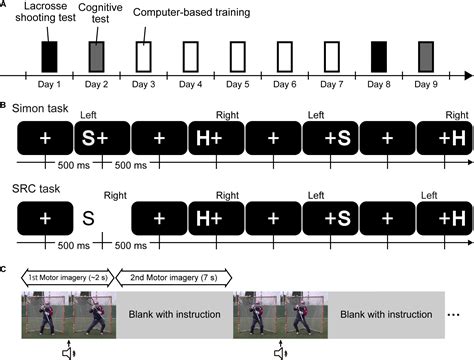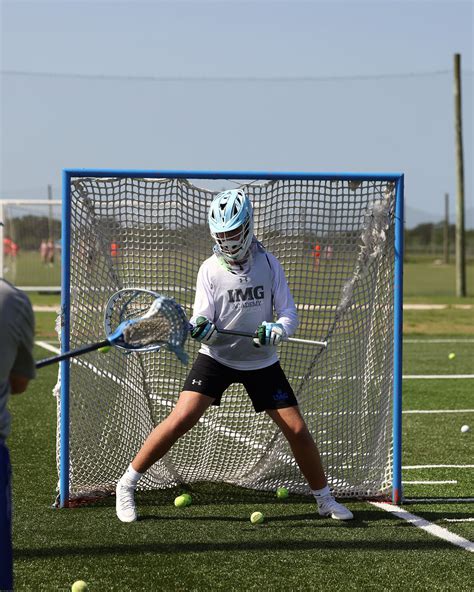Discover how wearable tech, video analysis, and virtual reality are revolutionizing lacrosse training, enhancing communication, and optimizing player performance through innovative technologies.In an era where technology permeates every aspect of our lives, the world of sports is no exception. Lacrosse, a fast-paced and dynamic game, is experiencing a transformative shift in how athletes train and develop their skills. From integrating wearable technology that monitors performance metrics to the innovative use of video analysis for player development, the impact of technology on lacrosse training is profound. Coaches and players alike are leveraging cutting-edge tools to enhance team communication, improve skills through virtual reality, and ultimately optimize training outcomes. This article explores the significant advancements in lacrosse training brought about by technology, highlighting the tools and techniques that are shaping the future of the game. Whether you’re a seasoned player or just starting out, understanding these innovations can elevate your training experience and performance on the field.
Integrating Wearable Tech Into Lacrosse Training
In recent years, wearable technology has revolutionized the way athletes train and develop their skills. In lacrosse, the integration of such technologies is reshaping training methodologies, enhancing performance insights, and fostering athlete engagement.
Devices such as GPS trackers, heart rate monitors, and motion sensors allow coaches and players to gain real-time data on various aspects of player performance. This real-time feedback can provide critical insights into a player’s speed, endurance, and overall physical exertion during practices and games. By analyzing this data, coaches can tailor training regimens to suit individual athlete needs, focusing on areas that require improvement.
The impact of these technologies goes beyond sheer metrics; they also enable players to monitor their progress throughout the season. For instance, athletes can track their heart rate trends or recovery times, which helps in understanding their physical conditioning and adjusting practices accordingly to prevent injuries.
Moreover, integrating wearable technology into lacrosse training encourages a culture of accountability and self-improvement among players. For example, athletes can set personal goals based on their performance metrics and strive to achieve them, leading to enhanced motivation and commitment.
As teams continue to adopt these advanced tools, the potential for improved performance becomes evident. The amalgamation of traditional training methods with innovative technology is paving the way for the next generation of lacrosse athletes who are better prepared and more connected to their training regimes.
The Impact Of Video Analysis On Player Development
Video analysis has revolutionized the way athletes approach their training, particularly in fast-paced sports like lacrosse. One of the most profound ways in which The Impact of video analysis is seen is in the realm of player development. This technology allows players and coaches to capture footage during practices and games, enabling them to dissect performance in ways that were previously unimaginable.
Firstly, video analysis facilitates the identification of technical flaws. By reviewing footage, coaches can pinpoint specific areas where players may need to improve their mechanics, such as shooting form or defensive positioning. This targeted feedback is invaluable for skill refinement.
Moreover, video analysis enhances tactical understanding. Players can review game footage not just of their own performances, but also analyze opponents. This allows athletes to recognize patterns, strengths, and weaknesses, enabling them to make informed decisions during gameplay.
Additionally, the psychological benefits of video analysis should not be overlooked. Seeing oneself in action can boost a player’s confidence and help them visualize better techniques and strategies. This mental imagery, reinforced by factual video evidence, supports cognitive development, which is crucial in a sport that requires quick thinking and adaptability.
The data collected from video analysis can be systematically reviewed over time, allowing for the tracking of progress. This can be particularly motivating for players, as they easily observe how much they’ve improved, reinforcing their commitment to training and skill development.
Incorporating video analysis into lacrosse training not only augments player performance but also embodies one of the most transformative impacts of technology on the sport, making it an essential tool in any player’s development arsenal.
Enhancing Team Communication Through Technology Innovations
The role of effective communication in team sports, particularly in lacrosse, cannot be overstated. With the rapid advancement of technology, teams are increasingly adopting innovative tools to improve communication on and off the field. These technologies not only enhance the flow of information but also foster a cohesive team environment.
The impact of technology on team communication can be seen in various forms, including mobile applications, digital platforms, and wearables. These tools facilitate real-time updates, strategy sharing, and feedback loops that can be crucial for player development and game preparation.
For example, mobile apps allow coaches to send instant messages or updates regarding practice schedules and game strategies. Such immediacy in communication ensures that all team members are on the same page, minimizing any chances of confusion. Additionally, digital platforms for video conferencing and chat enable players to stay connected even when they are not physically together, which is particularly beneficial during off-seasons or in periods of remote training.
Moreover, the integration of team-specific software can streamline the sharing of playbooks and strategic plans. These resources can be updated in real time, allowing players to access the latest tactics and insights directly from their devices. This accessibility promotes a better understanding of game strategies and allows for more effective execution during practice and competition.
The adoption of technology innovations significantly enhances team communication within lacrosse programs. By leveraging these tools, teams can ensure that every member is informed and engaged, ultimately improving overall performance on the field.
Using Virtual Reality For Skills Improvement In Lacrosse
Virtual reality (VR) has emerged as a transformative tool in the sports training landscape, including lacrosse. By creating immersive environments, VR enables players to engage in realistic game scenarios without the physical strain associated with traditional training methods. This technology provides various benefits that align with The Impact of technological innovations on athletic performance.
One of the significant advantages of using VR in lacrosse training is the ability to practice decision-making skills in real-time situations. Players can experience different game scenarios repeatedly, allowing them to react instinctively. This repetition is vital in building muscle memory and enhancing cognitive processing under pressure.
Additionally, VR training programs can simulate match conditions that help players adapt to various opponents and strategies. By dynamically adjusting the virtual scenarios based on the player’s performance, the technology offers a tailored training experience that is difficult to replicate in standard practice.
| Benefits of Using VR in Lacrosse Training | Description |
|---|---|
| Immersive Learning | Enhances understanding of game strategies through realistic simulations. |
| Safe Environment | Allows players to make mistakes and learn without physical risk. |
| Repetition and Reinforcement | Facilitates continuous practice of skills until mastery is achieved. |
| Cognitive Skill Development | Improves quick decision-making skills and reaction times. |
Furthermore, VR can enhance the engagement level during training sessions. Players are often more motivated when using innovative technologies, leading to more productive practices. This enhanced motivation ultimately contributes to improved on-field performance and showcases the profound impact of technology on lacrosse training.
Tracking Performance Metrics To Optimize Training Outcomes
In the ever-evolving landscape of lacrosse training, The Impact of performance metrics cannot be overstated. Coaches and players are increasingly turning to data-driven approaches to refine skills and measure progress, ensuring that athletes reach their full potential.
Utilizing advanced technology, lacrosse programs can now track a variety of performance metrics. These include:
| Performance Metric | Description |
|---|---|
| Sprints and Speed | Measures the acceleration and top speed of players during drills and scrimmages. |
| Agility | Assesses quickness and ability to change direction, critical for evading opponents. |
| Shot Accuracy | Tracks the percentage of successful shots on goal, vital for offensive players. |
| Endurance | Monitors stamina levels through heart rate variability during extended training sessions. |
By systematically analyzing these metrics, coaches can tailor training sessions to target specific areas that need improvement. For example, if data indicates that a player’s sprint times lag behind their peers, targeted speed drills can be integrated into their training regimen.
Moreover, the integration of The Impact of wearable technologies enhances the collection and analysis of these metrics. Wearable devices can collect real-time data, facilitating immediate feedback for athletes. This immediate insight allows players to self-correct and make adjustments instantly, further optimizing training outcomes.
By diligently tracking performance metrics, lacrosse teams harness the power of data analytics to refine their training practices, enhance player development, and sustain a competitive edge in a fast-paced sport.
Frequently Asked Questions
How has technology changed lacrosse training?
Technology has introduced various tools and devices such as performance tracking apps, video analysis software, and wearable sensors that allow athletes to monitor their progress, refine their skills, and enhance overall training effectiveness.
What are some examples of technology used in lacrosse training?
Examples include performance analytics platforms like Hudl, wearable technology like Zephyr BioHarness, and VR training systems that simulate game scenarios for better decision-making and skill application.
How can video analysis benefit lacrosse players?
Video analysis allows players and coaches to review gameplay footage, identify strengths and weaknesses, and develop tailored training plans based on specific performance metrics.
Are there any drawbacks to using technology in lacrosse training?
Some potential drawbacks include over-reliance on technology, which may detract from fundamental skills, or the risk of injury if training data is misinterpreted and not paired with proper coaching insights.
How can coaches effectively integrate technology into training?
Coaches can integrate technology by incorporating data-driven strategies, facilitating player feedback sessions with video analysis, and using tools to set measurable performance goals.
What role do apps play in improving a lacrosse player’s performance?
Apps can track statistics, offer workout plans, and connect players with coaches for real-time feedback, helping to optimize training regimens and maintain athletes’ motivation.
Is technology making lacrosse training more accessible?
Yes, technology provides access to resources, training programs, and expert advice through online platforms, making it easier for athletes of all levels to enhance their skills and performance.









